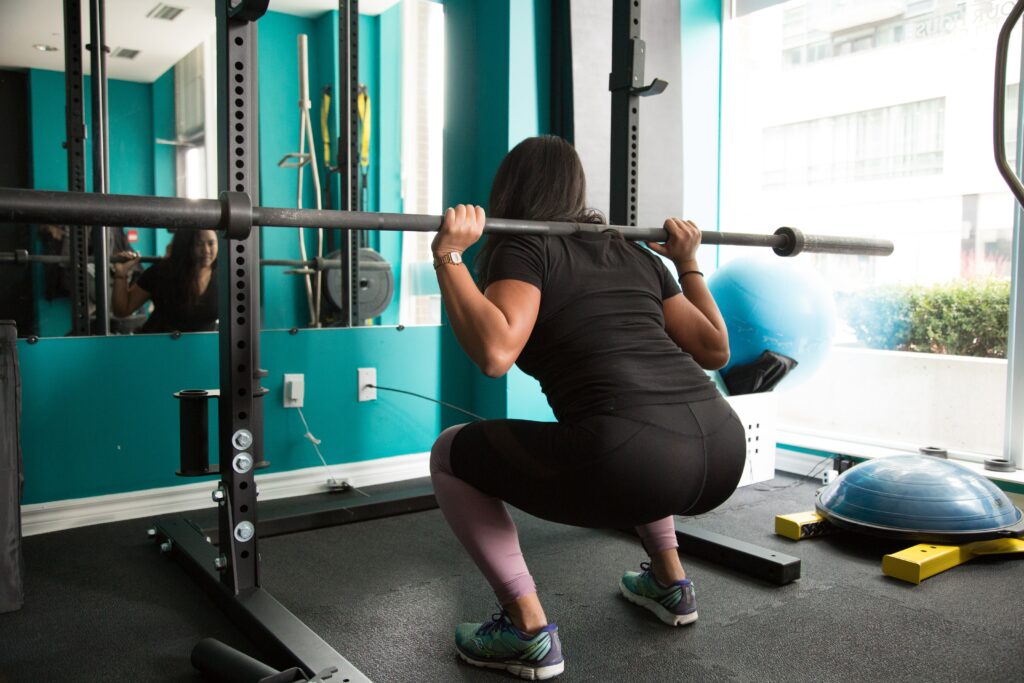Recently, I taught a continuing education course to some amazing musculoskeletal health care professionals. In the course, I repeatedly expressed my displeasure with the current trend of musculoskeletal health care practitioners and strength & conditioning coaches blaming people’s ‘glutes not firing’ for their unwanted physical symptoms (note that this has been going on for years now). These symptoms could be knee pain, hip pain, back pain, etc. There is in fact, a condition that has been invented to describe this supposed ‘condition’ called, Gluteal Amnesia. Insert face-palm emoji.
A registrant from the course emailed me and simply asked me to expand on the topic and more specifically my displeasure with the idea of someone’s ‘glutes not firing’. Once I started typing my reply, I just couldn’t stop, and it eventually reached a length that was worthy of a blog post. What follows is composed primarily of the contents of my reply to them with some additional thoughts sprinkled in.

TL;DR – People’s glutes are ‘firing’ just fine.
Let’s start by asking some simple questions…
- How does any health care practitioner (hcp) or strength & conditioning (S&C) coach know that a person’s ‘glutes are not firing’ or the person is not ‘engaging their glutes as much as they should’?
- How are they measuring how much the person is ‘engaging’ them? Surface electromyography (EMG)? Even if they are doing this, which I highly doubt, there are issues to consider. See here.
- Some might claim asymmetry between sides of the body is enough evidence. Then what about every other muscle in the body? We have asymmetrical strength in all muscles when comparing to the contralateral side of the body.
- Is there any research evidence to show that there is a certain amount of ‘engagement’ that is optimal or prevents injury or heals someone or gets rid of their pain?
- If there isn’t evidence, who is determining what an acceptable amount of ‘engagement’ is? What are they basing this on? Are there different levels of ‘acceptable’ that would change depending on the task being performed?
When you start to ask these most basic questions and critically think about this ‘dysfunction’, you can start to see some weakness (pun intended) in this narrative.
The poor glutes.
Let’s approach this from another line of thinking…do you have to tell any other muscle or muscles in the body how much to ‘fire’ or ‘engage’ so that you don’t cause a problem like pain to be manifested? Do you have to consciously tell any other muscle or muscles to engage or work when performing an activity?
For all movements, our bodies know exactly what muscles to ‘engage’ and how much to ‘engage’ them. We all have unique motor patterns for any specific movement but each of us accomplish all movements without any conscious effort. It is truly a miracle!
For instance, when picking up a cup of coffee and taking a sip I would estimate that at least, at least, 100 muscles all ‘engage’ at the perfect time in the right amount without any thought or control whatsoever! They do this in less than a blink of an eye.
Why would it be any different with a movement that your glutes are involved in? Like a step up. Again, at least 100 muscles are ‘firing’ in perfect synchronicity in the right amount to make a step up happen.
Why are the poor glutes picked on? Why don’t we hear about the pecs not ‘firing’? Or the rotator cuff not ‘firing’? Or the suboccipitals, or the obliques?
Picking out the glutes as a problem and saying that they aren’t ‘firing’ or ‘engaging’ is so unfair! The poor glutes! Why not some other muscle or muscle group, like the ones I mentioned above? Why don’t we have ‘Quadriceps Amnesia’?
Which glutes aren’t firing?
Then to continue the critical thinking process, I would also ask any professional saying that the ‘glutes aren’t firing’ or ‘engaging enough’, which glutes are you referring to?
The Gluteus Maximus, the Gluteus Medius, the Gluteus Minimus? All of them? Or are you referring to one of the 6 deep gluteal hip rotators? Or all the 6 deep gluteal hip rotators? Or are you talking about all the gluteals and the hip rotators?
Because ALL these muscles are ‘firing’ any time you are doing any movement that involves at least one of these muscles! The amount that each of them ‘fires’ changes depending on the movement being performed but they all do ‘fire’ to some degree and your body knows exactly how much to ‘fire’ each one to accomplish the task at hand.

But it works.
“But I am having success with people when I address their ‘glutes not firing’!!!” – many hcp’s and S&C coaches might reply.
I am not stating that you can’t have positive clinical outcomes with this approach. It is just that the positive clinical outcomes aren’t necessarily because you have suddenly gotten their glutes ‘firing’ a certain requisite amount. There are factors like natural history, regression to the mean, and other non-specific effects at play like contextual effects and placebo that contribute to clinical outcome.
There are also other mechanisms by which your specific approach could be working. Let’s critically think about that and discuss some ideas around that.
Can you change how someone feels when performing a given movement by consciously changing how you move? YES! Or in other words, can you change how things feel when performing a given movement if you consciously change the amount you ‘fire’ or ‘engage’ certain muscles and/or the order of how you engage certain muscles? Most definitely!!!
You can make a step-up feel very different by firing your muscles consciously in a different way than your default motor pattern (which requires no conscious thought). For sure!!!
Can a clinician change how someone feels by coaching them to move differently, YES!!! Might it relieve symptoms, YES!!!
Does that mean a muscle, or muscles weren’t ‘firing’ or weren’t ‘engaging’ enough when the person performed the task without conscious thought? NO!!!
All the hcp or S&C coach did was get them to do the movement differently which put different loads on the involved muscles and hence it felt different. Might this be a good approach to help someone? For sure!!!
Maybe this gives them a window where they are irritating the sensitive/inflamed tissue less, giving sensitized/inflamed tissue a chance to calm down by placing more load on other tissues (in this case, the glutes)!!! Great approach! This is exactly how limping works and why we do it!
But we must be careful of our narratives! When using this approach, you would just want to drop the “your glutes aren’t firing” narrative.
Telling someone their “glutes aren’t firing” or they “aren’t engaging their glutes enough” is simply a belief, a made-up hypothesis that has a lot of assumptions attached to it while also being incredibly reductionist. It completely ignores all the other factors (think Biopsychosocial Model) that could be contributing to the person’s symptoms/experience.
Instead, the professional could say something like…”Let’s get you to try accomplishing this movement in a slightly different way and see if it feels better and decreases your unwanted symptoms”.
IMHO this would be a much better narrative to attach to this approach. The bonus of this is that there is no chance that we would be creating a nocebic effect. The other narrative can increase fear and worry, making someone think that they have a ‘fault’, “their glutes aren’t firing”, and that they are going to continue to experience their unwanted symptoms until their ‘fault’ is ‘fixed’.
You could even add, “This could just be a temporary approach we take. Once the sensitive/inflamed tissue has calmed down you will probably be able to go back to moving your original way without any problems. Or if you prefer you can keep performing the movement in this new way!”
I want to be clear that I think strengthening the gluteals and all the hip muscles can do wonders and contribute to positive clinical outcomes. I just feel that the narrative being attached to the hip strengthening could be a lot more encouraging and a lot less worry-inducing.
Yes, a person may feel better after doing prescribed gluteal ‘activation’ exercises, I am not questioning that. The truth is that there could be many reasons why the person felt better after the intervention. I personally doubt the main reason is because the ‘activation’ exercises performed CPR on non-responsive gluteal muscles and brought them back to life!
What about when people are engaged in life?
Then I wonder…does the hcp or S&C coach think this new way of moving and accomplishing the task is necessary for them to alleviate their unwanted symptoms and to not have these symptoms ever return?
That again would be a belief. I would be impressed if the hcp or S&C coach could retrain the person’s new motor pattern to be adopted to their subconscious level and for it to require no thought. That takes A LOT of repetition.
I have not had much success changing people’s subconscious/automatic motor patterns for movement or posture over the long term.
I might be lacking the skills, and other professionals have them. Maybe I just lack the access to the person to facilitate this for them, or perhaps I have just been working with people who haven’t had the drive to perform the repetitions to make this a reality but holy moly, making the new firing/engagement pattern be unconscious, would be very difficult!!!
It may be easy to get your glutes to ‘fire’ the ‘right’ amount while you are in a controlled environment like a gym, or health care clinic, or laying on the floor in your living room but what about when you are out playing tennis? What about when you are trail running? What about when you are playing pickleball? What about when you are playing soccer? It is very hard to consciously think about firing the gluteals (or any other muscle) while performing these activities. In the heat of the moment it is all unconscious!

We’ve seen this before and probably will again.
This is not a new narrative; we have been down this path before. Perhaps you are old enough to remember the TVA (Transverse Abdominus) not firing craze of the early 2000s? Yeah, that happened.
Or perhaps you better remember the VMO not firing phase we endured.
Thank goodness both of those have been put to bed. Even if they aren’t asleep, at least they are tucked into bed.
One day I hope the “your glutes aren’t firing” craze will be gone as well. Here is hoping it simply isn’t replaced with another muscle ‘not firing’ craze because I don’t know if I have it in me to yell at the clouds all over again.
Musculoskeletal health care is full of uncertainty. These topics could be discussed from many angles. My intention was not to criticize anyone with this blog. You are all doing a great job helping people, of that there is no doubt. I am simply wanting to further the discussion in hopes that we grow and collectively move forward in a ‘less wrong’ direction.
If you have made it this far, I am impressed. I didn’t know people read things this long anymore! Thank you for taking the time.
Mahalo,
Marcus
Additional Reading: For a closer look at the research evidence on this subject please read this and this.
